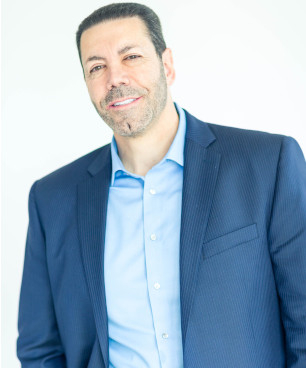Weekly Blog #4
“The price of admission to higher returns is volatility.” Morgan Housel
Every investor wants to make money. But making money is not the same thing as making money wisely. The difference? Risk. More specifically, the risk premium—the extra return an investor demands for taking on uncertainty. If you don’t demand a sufficient risk premium for a given investment, you’re not being sufficiently compensated.
We’ve all heard the old saying, “risk versus reward,” implying that investment returns should be commensurate with the risk. But how does an investor know if they’re being fairly compensated? That’s where the Capital Asset Pricing Model comes in. CAPM provides a framework for estimating the expected return on an investment based on its risk relative to a risk-free asset—typically US Treasury securities because the market believes Uncle Sam is good for the money.
CAPM is expressed as: rm = rf + β(rm − rf), where rm = expected return of the market, β = volatility (risk), and rf = the risk-free rate. This formula tells us that investors’ required return isn’t determined by risk alone, but also by the risk-free rate and the expected return on the overall market.
The Treasury Bill is typically the risk-free rate starting point. Why? It’s highly liquid and considered free from default risk. Treasury securities have terms between one-month and thirty years, and you should match the term of the Treasury security to the holding period. For example, if the investment term is a decade, you would use the 10-year Treasury note.
In any given year, the Capital Asset Pricing Model is wrong—but conceptually it’s right because it quantifies the required risk premium—the extra return an investor needs over the risk-free rate to justify an investment.
Historically, different asset classes have provided the following returns (1928-2024):
| Asset Class | Return |
| Treasury bills | 3.31% |
| Real estate | 4.23% |
| Treasury notes | 4.50% |
| Gold | 5.12% |
| Corporate bonds | 6.62% |
| Stocks | 9.94% |
The concept of risk premium is central to smart investing. While CAPM uses beta (a statistical measure of volatility) as a risk proxy, wise investors consider all forms of risk, including:
- Market risk—The loss of some or all of your principal.
- Liquidity risk—Inability to sell an asset quickly.
- Inflation risk—The risk that price levels rise faster than your investment value.
- Interest rate risk—Rising interest rates reduce the price/value of your investment.
- Credit risk—The risk of default by the borrower/issuer of debt.
Historically, banks pay depositors a rate that lags the rate of inflation (CPI). While everyone should keep a reasonable amount in savings—generally equal to 3–6 months’ expenses—long-term money should be positioned in a manner that provides a real return.
While investments like Treasury notes and corporate bonds have historically outpaced inflation, they tend to be poor long-term growth vehicles. This is where riskier assets, such as stocks and real estate, are generally better wealth building vehicles.
Over time, stocks have delivered ~10% annual returns. With low purchase minimums and transaction costs, stock mutual funds have been a great investment vehicle for retirement plan participants. Jack Bogle, founder of Vanguard, often recommended low-cost index funds—and history has demonstrated the wisdom of his sage advice.
Real estate, another proven long-term asset, has historically appreciated ~4% annually, with rental properties providing steady monthly income. A well-managed rental property with a 6% cap rate could generate total returns comparable to stocks (~10%).
Between 2008 and 2022 (post financial crisis), the Federal Reserve artificially suppressed interest rates through quantitative easing (QE), driving short-term rates to near zero for nearly 14 years. This Fed policy—extraordinarily accommodative interest rates—acted as a hidden tax on savers and investors, pushing the risk-free rate to zero and compressing required returns across asset classes.
Before the Great Financial Crisis (GFC) and QE, investment real estate typically provided 7–8% cap rates. However, post-COVID stimulus (monetary and fiscal) drove inflation to over 9% at its peak. The Fed’s primary medicine for rising price levels is tighter monetary policy so, not surprisingly, interest rates surged. To that point, the 3-month T-bill jumped from 0.06% in November 2021, to over 5% by May 2023.
Although rates have eased slightly since then, the risk-free rate remains significantly higher than it was three years ago, meaning investors should rethink required returns—especially for real estate.
In summary, every investment should be evaluated against the risk-free rate. Similarly, the longer and riskier the investment, the bigger the premium you should demand. At the end of the day, investing isn’t just about making money—it’s about making risk-adjusted money. Understanding required return and the risk premium is what separates smart investors from speculators.
Mark Lazar, MBA
CERTIFIED FINANCIAL PLANNER™









